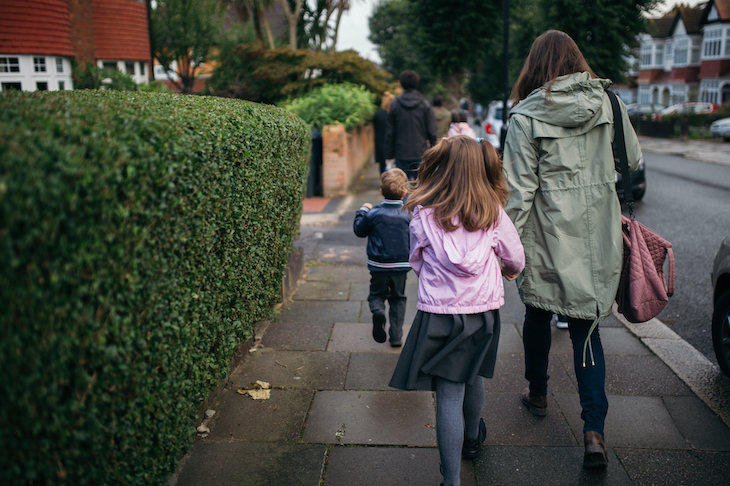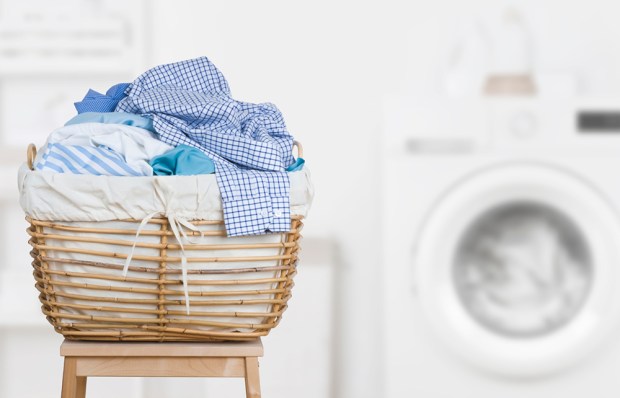Monday was ‘national offer day’, which means that more than half a million parents across England were notified about which primary school their child got into. For most, the news was good, with nine in ten parents securing a place at one of their top three choices. But for some — particularly in London — the offer letters brought disappointment. In Kensington and Chelsea, for instance, just 68.3 per cent got their first choice of school. Not surprising, then, that parents have been resorting to fraud.
In some cases, desperate parents end up spending so much money to game the system it would be cheaper to go private. Mumsnet commissioned a poll which found that 18 per cent of parents admit to buying or renting a house in the catchment area of their preferred school. That can backfire, of course. According to a story on the front page of the Times in 2016, the school in England with the smallest catchment area is Fox Primary in Notting Hill, with parents needing to live within 107 yards of the front gate. Not many can afford to rent or buy in Notting Hill, where the average house price is more than £3 million, but anyone who did so to get their child into Fox’s this year will be disappointed. The school’s governors were so concerned about its privileged intake that they have introduced a lottery-based admissions policy.
I’m in the unusual position of having helped create three primaries, so I’ve become something of an expert on this subject. Indeed, I’ve thought about setting up a consultancy that advises parents on how to get their kids into the best state schools. But in the meantime, here’s some free advice.
To begin with, parents wildly overestimate the effect that attending a ‘good’ school will have on their child’s life chances. I recently co-authored a study which showed that the type of school that children go to accounts for less than 1 per cent of the variance in their exam results if you control for general cognitive ability, parental socioeconomic status and various genetic markers. Admittedly, that piece of research just looked at secondary schools, but a study of different types of primary schools using the same methodology would yield similar results.
Which isn’t to say that some schools aren’t better than others, but here’s another thing: parents are often unreliable judges. In my experience, anxious middle-class parents are more influenced by herd opinion than objective data, such as a school’s most recent Ofsted report. If they visit a school on an open day, they’re likely to be unduly affected by the manners of the child who shows them round, as if that child is typical rather than a charmer hand-picked by the headteacher. They wander from classroom to classroom gazing at the wall displays and seeing the neat exercise books open on desks, unaware that what they’re looking at is a Potemkin village. Instead, ask the headteacher to see the data recording what progress pupils have made in reading between key stages 1 and 2. A score of 0 means that, on average, the pupils achieved similar results at the end of key stage 2 to pupils in other schools with similar key stage 1 results. Typically, schools will record scores of between 5 and +5, so look for a score of +3 or above. If you’re a parent who has been offered a place at a school that wasn’t among your top three choices, compare the progress data of that school with the others. You could be surprised to discover that it’s actually better.
Some schools may be easier to get into because they’ve just opened, not because they’re poor. Most free schools have difficulty filling all their places in year one, but primary free schools are twice as likely to be rated ‘Outstanding’ by Ofsted as all other types of school and they get the best key stage 1 results in the country. Worth a punt if you can’t get a place at the local ‘good’ school.
Finally, if you’re determined to get into the local middle-class ‘oasis’, ask to go on the waiting list — and call once a week to check where you are. It’s particularly worthwhile calling just before the autumn census data is collected, since the school will need to be full on that day to ensure it’s fully funded. That usually falls in the first week of October, and your chances of being offered an in-year place just before then is higher than at any other time. Best of luck — and, remember, schools are less important than you think.
Got something to add? Join the discussion and comment below.
Get 10 issues for just $10
Subscribe to The Spectator Australia today for the next 10 magazine issues, plus full online access, for just $10.
You might disagree with half of it, but you’ll enjoy reading all of it. Try your first month for free, then just $2 a week for the remainder of your first year.















Comments
Don't miss out
Join the conversation with other Spectator Australia readers. Subscribe to leave a comment.
SUBSCRIBEAlready a subscriber? Log in